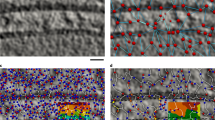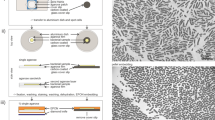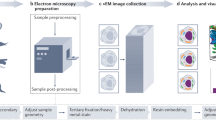Abstract
THE combination of the techniques of electron microscopy and autoradiography was first described by Liquier-Milward1. O'Brien and one of us (L.A.G.) later described the application of a similar technique to ultra-thin sections of yeast2. This communication describes a further modification of the technique for the identification of radioactive particles collected on millipore filters. This work was in support of an investigation into the effects of the inhalation of radioactive particles.
This is a preview of subscription content, access via your institution
Access options
Subscribe to this journal
Receive 51 print issues and online access
$199.00 per year
only $3.90 per issue
Buy this article
- Purchase on Springer Link
- Instant access to full article PDF
Prices may be subject to local taxes which are calculated during checkout
Similar content being viewed by others
References
Liquier-Milward, J., Nature, 177, 619 (1956).
O'Brien, R. T., and George, L. A., II, Nature, 183, 1461 (1959).
Kalmus, E. H., J. App. Phys., 25, 87 (1954).
Mastel, B. (personal communication).
Author information
Authors and Affiliations
Rights and permissions
About this article
Cite this article
GEORGE, L., VOGT, G. Electron Microscopy of Autoradiographed Radioactive Particles. Nature 184, 1474–1475 (1959). https://doi.org/10.1038/1841474b0
Issue Date:
DOI: https://doi.org/10.1038/1841474b0
This article is cited by
-
Probleme der elektronenmikroskopischen Autoradiographie
Die Naturwissenschaften (1966)
-
Use of Electron Autoradiography for investigating Viral Infection in Tissue Culture
Nature (1964)
Comments
By submitting a comment you agree to abide by our Terms and Community Guidelines. If you find something abusive or that does not comply with our terms or guidelines please flag it as inappropriate.



